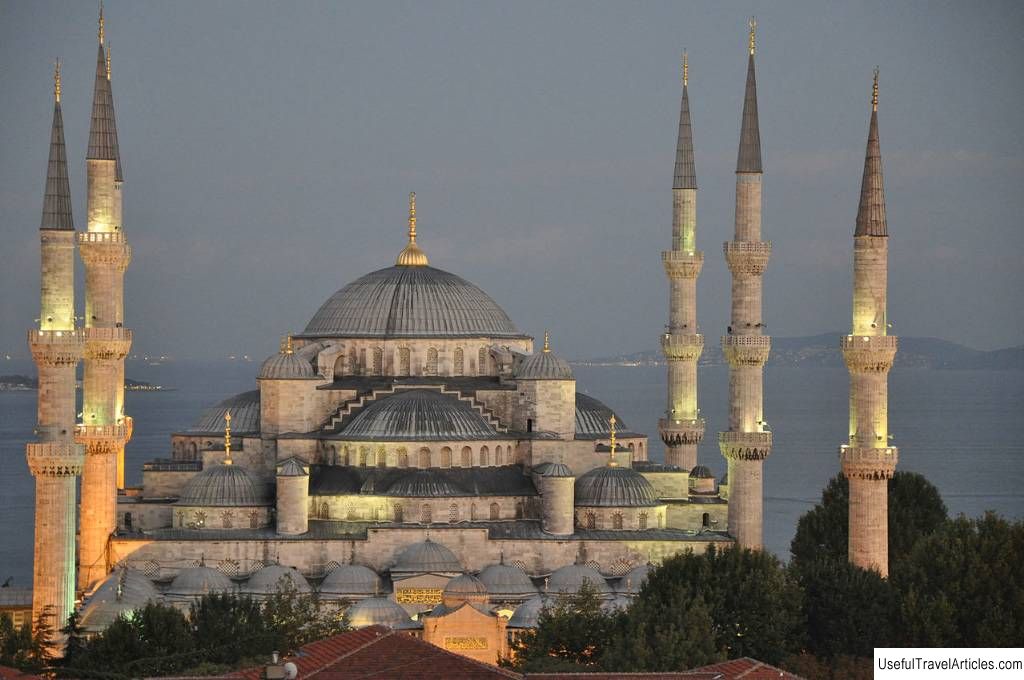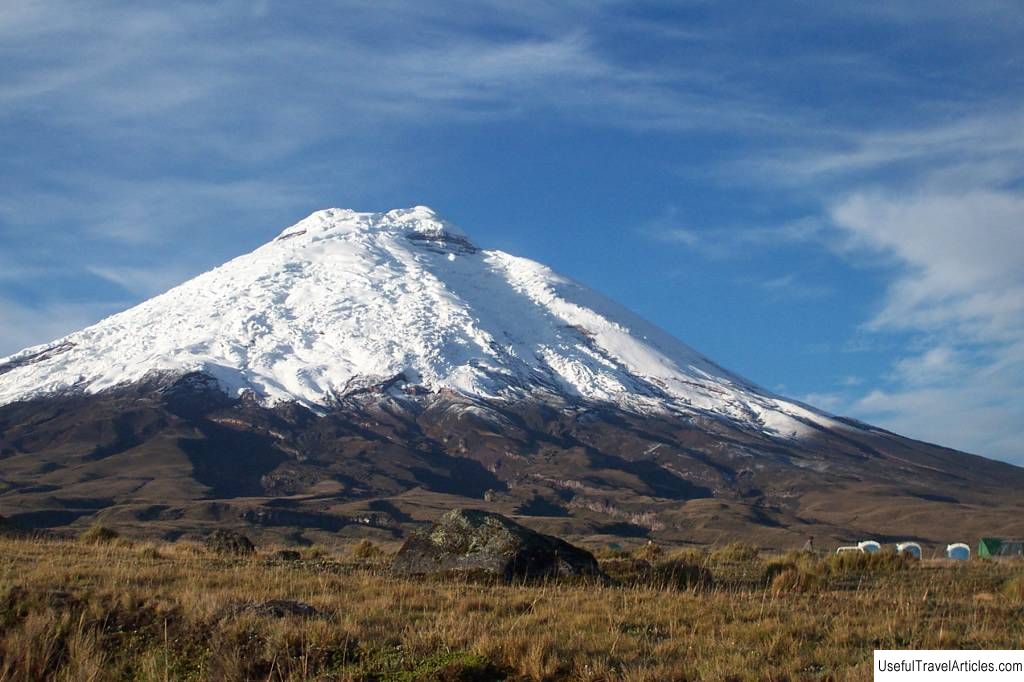Blue Mosque (Sultan Ahmet Jani Mosque) (Sultan Ahmet Camii) description and photos - Turkey: Istanbul
Rating: 8,7/10 (390 votes) 
Blue Mosque (Sultan Ahmet Camii Mosque) description and photos - Turkey: Istanbul. Detailed information about the attraction. Description, photographs and a map showing the nearest significant objects. The title in English is Sultan Ahmet Camii. Photo and descriptionThe Blue Mosque is considered the first largest and one of the most beautiful mosques in Istanbul. The Blue Mosque is the greatest masterpiece of not only Islamic but also world architecture. The mosque is located in the historical center of the city on the shores of the Sea of Marmara. Opposite the Blue Mosque is the Hagia Sophia Mosque. The Blue Mosque is one of the symbols of Istanbul. It accommodates 10 thousand people. Today there is a tradition: it is here that Muslim pilgrims gather before leaving for Mecca. History of constructionDuring the Ottoman Empire, Ahmed I waged two wars at once - with Iran and Austria. The war with Austria ended with the signing of the Zhitvatorok Peace Treaty (November 11, 1606), which obliged the Ottomans to abandon the annual tribute from Austria and recognize the imperial title of the Habsburgs. This defeat, together with other events, caused the fall of Turkey's authority, so Ahmed I decided to appease Allah and build a mosque. The construction of the mosque came in very handy, since no new mosque has yet been built for 40 years. In August 1609, the construction of the mosque began. The sultans who ruled before Akhmet I built mosques at the expense of funds obtained in wars. Akhmet had to take money from the treasury. To this day, the library of the Topkapi Palace contains 6 volumes of descriptions of the works on the construction of the mosque. It was decided to build the mosque near the Topkany Palace. Before construction began, several buildings from the early Ottoman and Byzantine periods were demolished at the Hippodrome. The mosque was built by the architect Sedefkar Mehmet Agha, a student and the main assistant of the architect Sinan. The mosque is made in two styles: classical Ottoman and Byzantine. Legend has it that according to the order of the Sultan, the architect had to build 4 golden minarets, but as a result 6 minarets were built. Internal and external decoration of the mosqueThe mosque was built for 7 years, and in the year before the death of the Sultan (1616) was ready. The materials for the construction were stone and marble. Many (more than 20,000) white and blue handmade ceramic samples were used as decorations, so the mosque was named Blue. The size of the central hall of the mosque is 53x51 m, the diameter of the dome that covers this hall is 23.5 m, and the height is 43 m. The inscriptions adorn the dome and half-domes. The dome of the mosque is installed on four huge columns, the diameter of which is 5 m. The patterns that decorate the mosque depict lilies, tulips, roses and carnations. Ornaments of different colors are made on a white background. According to the calculations made, more than 50 variations of the image of tulips were used to complete the patterns. There are carpets on the floor of the mosque. There is a lot of light in the mosque, which comes in through 260 windows. During the construction of the mosque, glass brought from Venice was installed, but later these glasses were replaced. The prayer niche - mihrab - carved from marble is striking. On it is placed a black stone that was brought from Mecca. Near the mihrab there is a minbar - the place where the imam reads sermons. There is a special entrance to the mosque, located in the western part of the building. A chain hangs over this entrance. The entrance was intended for the Sultan, who rode on horseback into the courtyard of the mosque. At the entrance, the sultan was forced to bend over, as the chain hung low. This action meant the insignificance of the Sultan before Allah. Minarets of the Blue MosqueThe four minarets of the mosque are equipped with three balconies, two more minarets - two. Initially, 14 balconies were built - this is exactly how many Ottoman sultans, including Ahmed I. A little later, two more balconies were completed, due to the fact that the sons of Ahmed I were also considered sultans. Near the mosque there is a mausoleum, where Ahmed I is buried, his wife and sons. In the northeastern part of the mosque, there is the Sultan's pavilion, today the Carpet Museum is equipped here. After the completion of the construction of the Blue Mosque, it turned out that the number of minarets, and there were six of them, corresponds to the number of minarets in the Masjid al-Haram mosque located in Mecca. In this regard, the seventh minaret had to be completed. An interesting fact is that from 1953 to 1976, a 500 lire banknote was in circulation, on which the Blue Mosque was depicted.             We also recommend reading Swan Bells Tower description and photos - Australia: Perth Topic: Blue Mosque (Sultan Ahmet Jani Mosque) (Sultan Ahmet Camii) description and photos - Turkey: Istanbul. |




